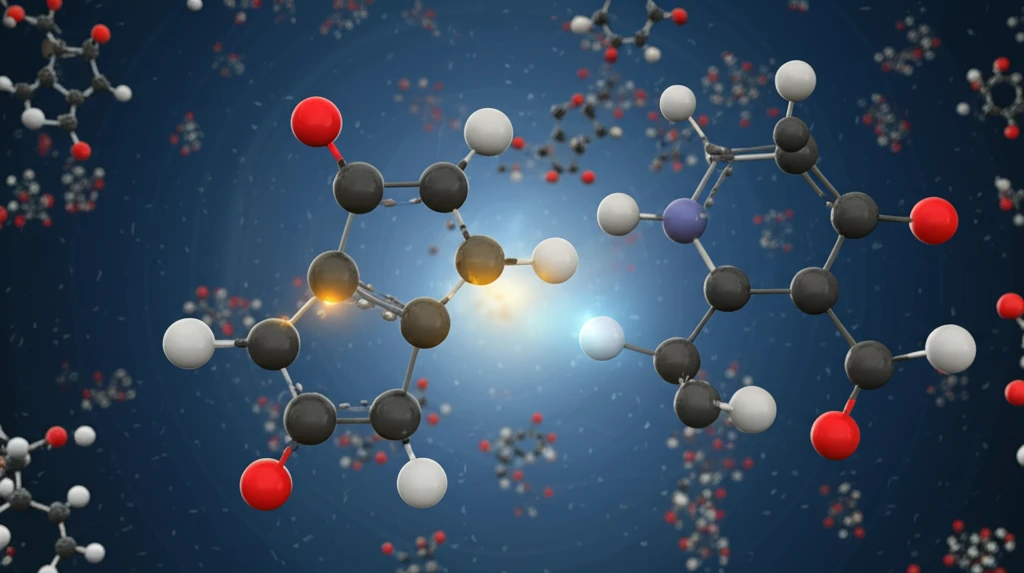
Decoding Chemical Reactions: How Understanding Molecular Mechanisms Can Revolutionize Your World
"Unlock the secrets of phospha-Michael additions and kinetic isotope effects to understand the reactions shaping our environment, medicine, and everyday materials."
Ever wondered how scientists develop new drugs, create stronger plastics, or clean up environmental pollutants? The answer often lies in understanding the fundamental mechanisms of chemical reactions. At the heart of these processes are reactive intermediates—fleeting molecular structures that appear and disappear in the blink of an eye, dictating the path a reaction takes.
One such intriguing reaction is the phospha-Michael addition, where tertiary phosphines interact with electron-deficient alkenes. Imagine tiny Lego bricks (phosphines) snapping onto larger structures (alkenes) to form new, complex arrangements. These reactions are essential in creating a variety of valuable compounds, but their exact steps have long remained a mystery.
Recent research has shed light on these mechanisms by exploring kinetic isotope effects. By observing how slight changes in molecular weight (using isotopes like deuterium) affect reaction speeds, scientists can infer the precise order and nature of bond formations and breaks. This approach offers a powerful window into the invisible world of molecular transformations.
What are Kinetic Isotope Effects and Why Do They Matter?

Kinetic isotope effects (KIEs) are changes in the reaction rate of a chemical reaction when one of the atoms in the reactants is replaced by one of its isotopes. Isotopes are atoms of the same element that have different numbers of neutrons. For instance, deuterium is an isotope of hydrogen with one neutron, while ordinary hydrogen has none.
- Primary Kinetic Isotope Effect: Occurs when the bond to the isotope is directly involved in the reaction. These effects are generally larger.
- Secondary Kinetic Isotope Effect: Occurs when the isotopic substitution is at a position adjacent to the reaction center. These effects are usually smaller but still provide valuable information about the reaction mechanism.
- Solvent Kinetic Isotope Effect: Involves changing the isotopic composition of the solvent. This can influence the reaction rate if the solvent participates in the reaction mechanism.
The Future of Chemical Understanding
By employing sophisticated techniques like kinetic isotope effect studies, chemists are steadily demystifying the complex dance of molecules in chemical reactions. This deeper understanding not only refines existing chemical processes but also opens new avenues for innovation. From designing more effective pharmaceuticals to creating sustainable materials, the ability to manipulate reactions at a fundamental level holds immense potential for solving some of the world's most pressing challenges.
